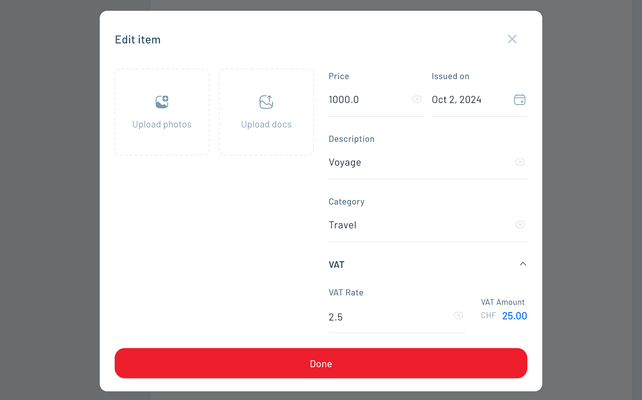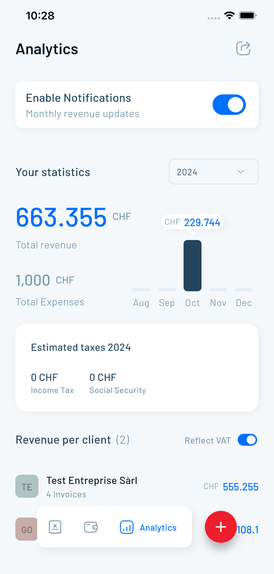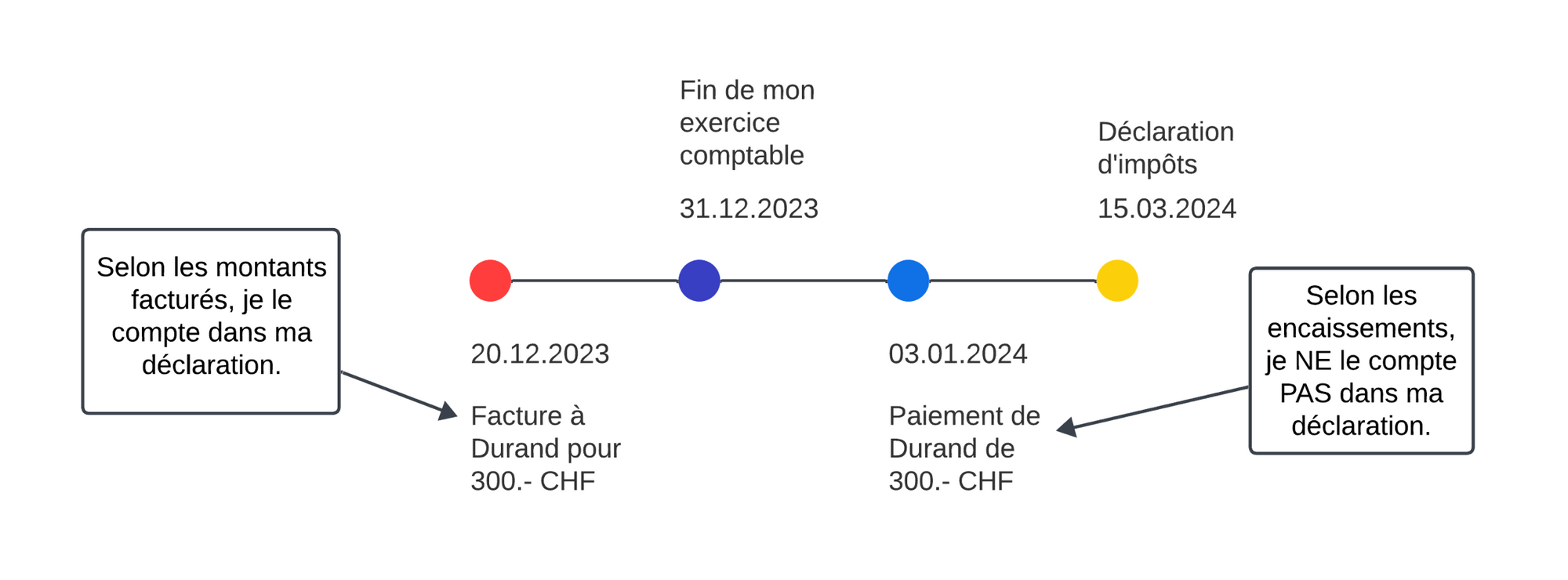✤ Number 1: Net profit corresponds to the subtraction of sales and expenses for the fiscal year. This amount is recorded at the bottom of the income statement.
✤ Number 2: Non-tax-deductible expenses debited to the income statement correspond to expenses you make for your private life. These expenses are not related to the activity.
Example: Purchasing pet food for your companion animal while your business is in information technology.
Deductions for the 2nd pillar and 3rd pillar.
The 2nd pillar is optional as the manager of your company, the 3rd pillar is private insurance whose premiums cannot be deducted.
The private portion corresponds to the consumption of assets such as a car that has both private and commercial use.
Example: You visit a client to deliver products and pick up your children from school at the end of the day. The first trip is deductible as a business expense while the second is private and therefore non-deductible.
✔ For more information, you can consult numbers 3, 4, 5 of the following notice Notice N1/2007 - Benefits in kind for self-employed persons.
✤ Number 4: Benefits in kind are the use of company merchandise for your private use.
Example: A baker consumes their own bread. This consumption is considered income "in kind" and must be deducted from the result.
✔ For more information, you can consult numbers 1 and 6 of the following notice Notice N1/2007 - Benefits in kind for self-employed persons.
✤ Number 5: Commercial income not credited to the income statement refers to exceptional income such as the sale of depreciated machines on which you make a profit.
✤ Number 11: Personal AVS/AI/APG contributions of the self-employed person should be entered here. For more information, consult the Your Self-Employed AVS section at the bottom of this article.
✤ Number 12: Information on merchandise inventory corresponds to the inventory value at the beginning of the year and its value at year-end. Subtracting these two values reveals the balance and thus the inventory variation. This balance is part of the company's assets.
Inventories are generally provided in the appendix and are proof of stock values.
✤ Number 13: The depreciation table allows establishing the total value of your depreciation according to category: buildings, vehicles, machines/tools, installations, furniture.
Example: On January 1st of 20_1, you purchase a computer for 1500 francs for professional use and decide to depreciate it over 5 years.
At purchase, this computer will not be a 1500-franc expense for your company but will be considered an asset.
Here is the computer's depreciation schedule:
| Date |
Depreciation Amount |
Balance |
| 01.01.20_1 |
- |
1500.- |
| 31.12.20_1 |
300.- |
1200.- |
| 31.12.20_2 |
300.- |
900.- |
| 31.12.20_3 |
300.- |
600.- |
| 31.12.20_4 |
300.- |
300.- |
| 31.12.20_5 |
300.- |
1.- |
Per year, the expense is 300 francs for your company.
There are other depreciation methods.
For more information, you can consult the following notice: Notice A/1995 - Depreciation of fixed assets of commercial enterprises
✤ Number 14: Book extracts are account balances according to their titles directly reported from the general ledger.
Example: Letter a), purchases of merchandise and raw materials (including acquisition costs) are products purchased from your suppliers and transport costs (or other costs related to this purchase).



